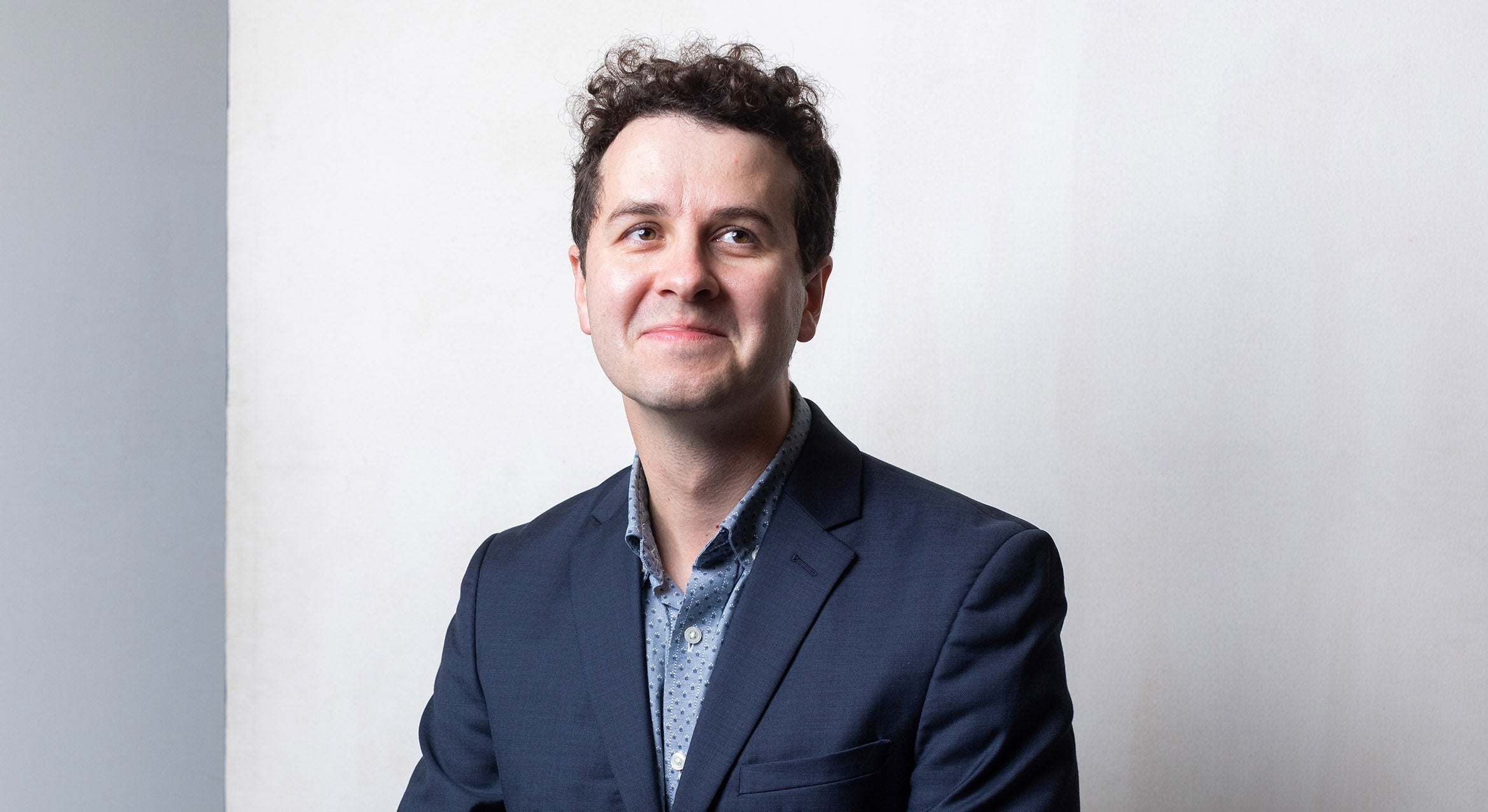Shaping the Future
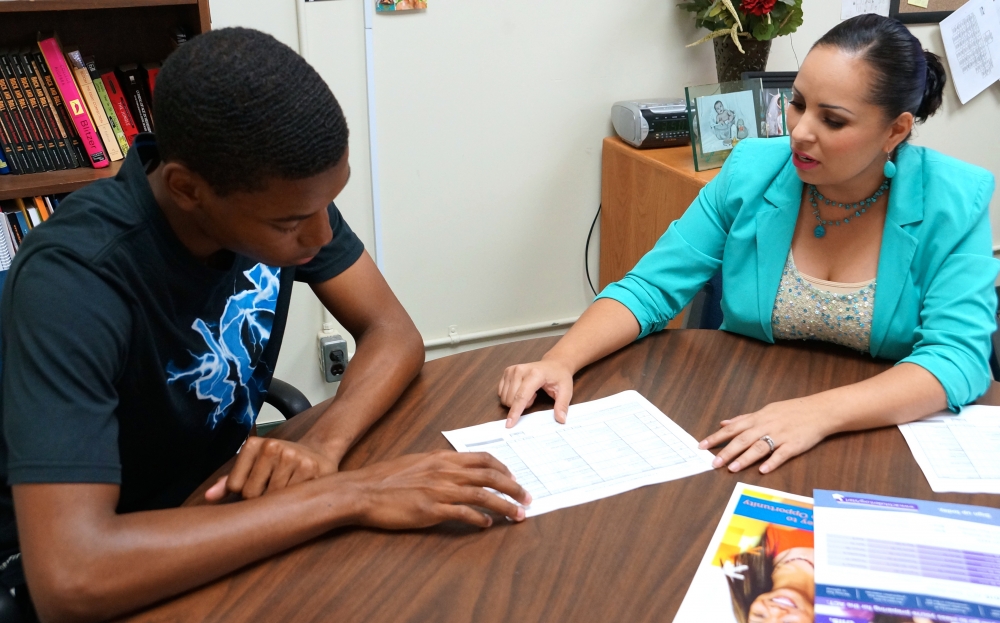
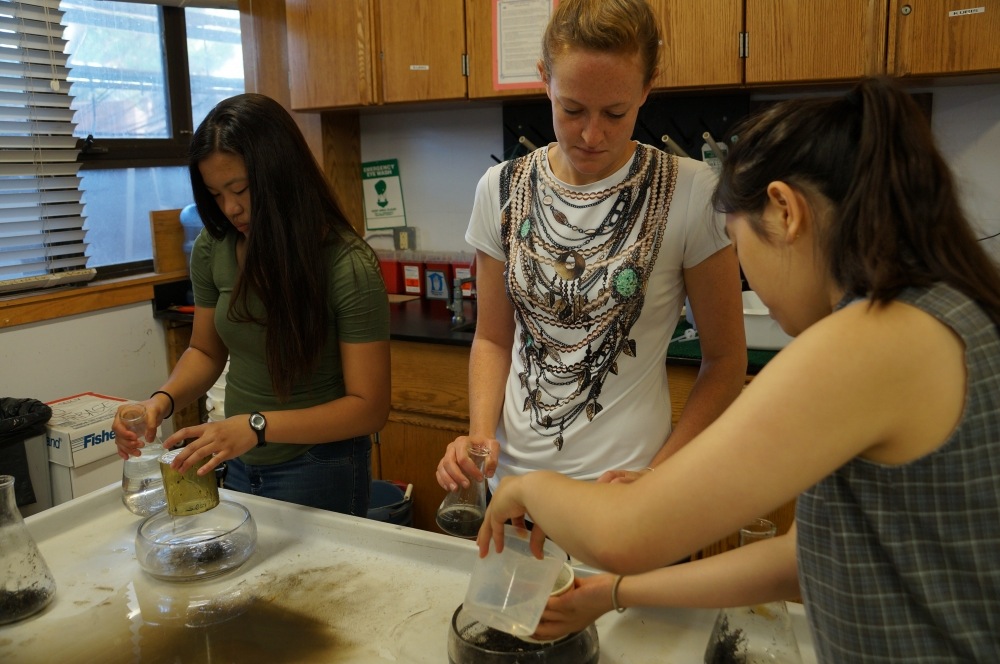
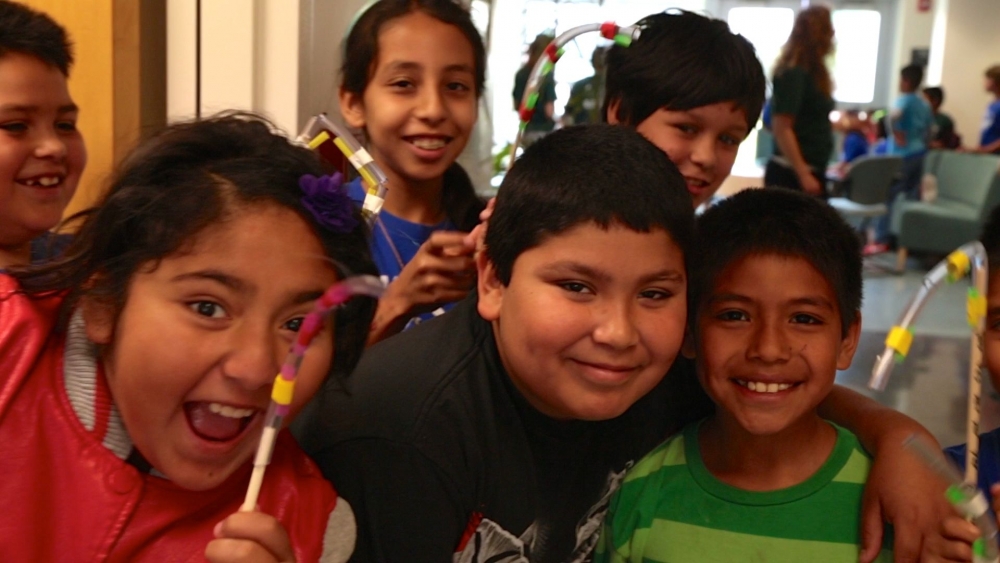
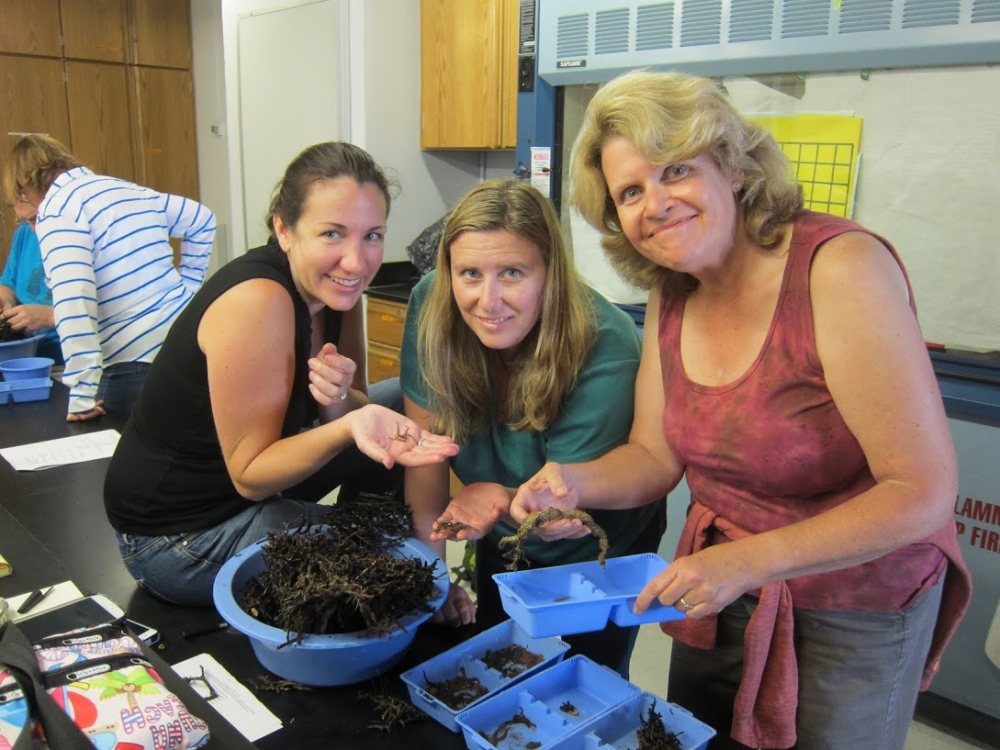
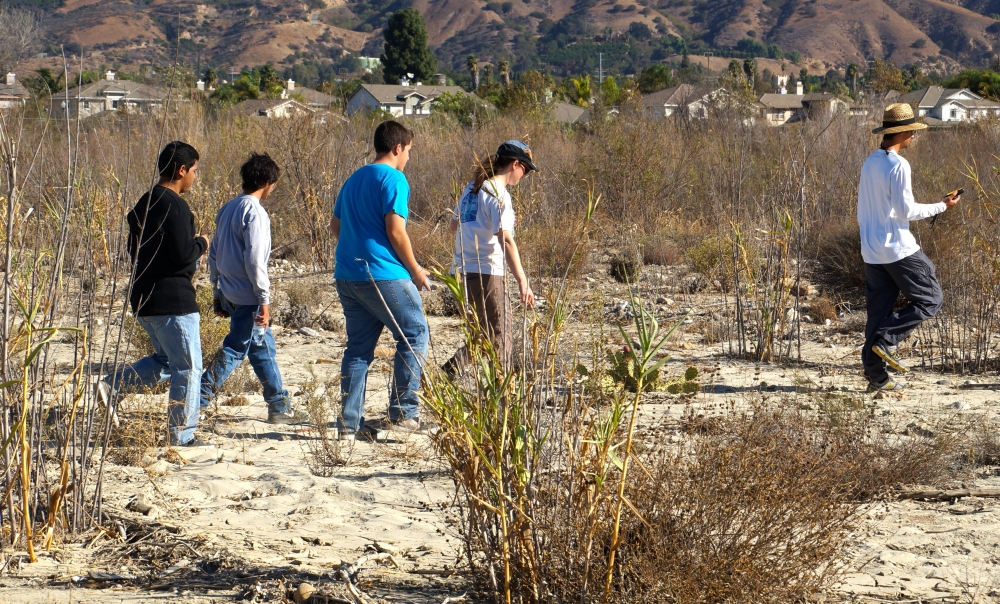
Outreach Noun: The act of extending services, benefits, etc., to a wider section of the population
From Santa Barbara third-graders taking their first tentative steps into a swimming pool, to visiting researchers from Europe spending their summers learning about string theory, UC Santa Barbara’s outreach efforts continue to grow each year.
And it’s not just students who benefit from UCSB’s college knowledge. Community members and civic leaders also have been helped by the many programs and conferences offered by UCSB departments and organizations.
It’s not a coincidence. Outreach is in UCSB’s DNA, according to David Marshall, executive vice chancellor.
“At UC Santa Barbara, we take our responsibility as a public university very seriously,” Marshall said. “The 1960 California Master Plan for Higher Education created a comprehensive network for postsecondary education that includes the University of California, the California State University system and the California Community College system, but in fact we reach out to students in our community from the time they enter elementary school. Our faculty, students and staff are committed to our outreach efforts. We want every elementary and high school student in our area to understand the intellectual excitement and the many opportunities offered by a great public research university, so they will aspire to get the most out of their education.”
Here are highlights of some of UCSB’s most successful outreach programs:
Early Academic Outreach Program
A college-prep program sponsored by the University of California, UCSB’s Early Academic Outreach Program (EAOP) serves about 1,000 students each year in seven high schools from Fillmore to Oxnard and Bakersfield to Carpinteria. High school students meet every day with representatives from the University of California to discuss college placement tests, admissions requirements, financial aid possibilities and what to include in their personal statements for university applications. “If you really want to get into college,” said Sarai Sifuentes, a senior at Oxnard’s Rio Mesa High School who hopes to become a veterinarian, “join the EAOP program because it really prepares you for everything that’s coming.”
Research Mentorship Program
Almost 100 high school students from throughout the country travel to UCSB each summer to learn how to conduct graduate-level research in the Research Mentorship Program sponsored by the Office of Summer Sessions. For six weeks, the high schoolers participate in active research under the direction of UCSB faculty members, postdoctoral students and advanced graduate students. The projects cover a broad range of disciplines — everything from Chicano studies and chemical engineering to philosophy and physics. “I came here expecting to just learn how to do research, but it’s been so much more than that,” said Sarah Kang, a junior at San Marcos High School in Santa Barbara, who studied variances in algae growth response.
Q Bio School
The Santa Barbara Advanced School of Quantitative Biology attracts more than 100 graduate students, postdocs and even faculty members from around the world, who come to UCSB each summer to collaborate on the problem of animal development, or some other equally challenging research project. “We put together eight core ideas for research projects, but it's really the students that bring this to life,” said Joel Rothman, Wilcox Professor of Biotechnology in UCSB's Department of Molecular, Cellular and Developmental Biology (MCDB) and a founding co-director of the course.
The Odyssey Project
Now in its fourth year, the Odyssey Project, an award-winning summer program sponsored by UCSB’s Department of Theater Arts, brings a group of troubled teens from the Los Prietos Boys Camp in Santa Barbara to UCSB over the course of four weeks to produce and perform their own version of Homer’s “Odyssey.” After weeks of rehearsal, the boys, who work with eight UCSB undergraduates and recent alumni from theater arts, stage a performance of the play at Center Stage Theater in Santa Barbara. “The camp really is rehabilitative, and I see my theater as rehabilitative theater,” Michael Morgan, senior lecturer in theater arts and the play’s director, said. “It’s therapeutic and transformative.”
PRT Autism Conference
Lynn and Robert Koegel pioneered Pivotal Response Treatment (PRT), one of only a handful of autism therapies supported by empirical evidence. The couple started UCSB’s Koegel Autism Center, which has received worldwide attention for its treatment of patients across the autism spectrum. Each year the Koegels host the International Pivotal Response Treatment Conference for Autism Spectrum Disorder, and each year that conference draws more than 250 people — scholars, educators, health care professionals and parents — who come to learn about cutting-edge interventions and treatment strategies for autism and Asperger’s syndrome. “In order to get the treatment to millions of people, you have to develop a technology to train millions of people,” Robert Koegel said.
UCSB Day
The Gevirtz Graduate School of Education (GGSE) partners each year with Santa Barbara’s Harding University Partnership School to bring the entire Harding student body to UCSB for a day of fun, games and scholarly pursuits. UCSB and Harding joined forces in 2010 and the results have been spectacular. Once on the verge of being taken over by an outside agency, the formerly failing Harding has seen its test scores soar since being reborn as a partnership school. For UCSB, it provides a training ground for undergraduate and graduate students who tutor and student-teach at Harding. “This means a lot to our kids,” said former Harding Principal Vanesha Davis. “It gives them a firsthand experience of what college life is like. Being that they get to come here and see and interact and learn, I think, gives them a greater understanding and gives them a picture of a future for themselves. I think that’s huge.”
Central Coast Sustainability Summit
For the past four years, UCSB has been the driving force behind a movement to bring together sustainability leaders and stakeholders in an effort to address the most pressing environmental issues facing the Santa Barbara area. The 4th Annual Central Coast Sustainability Summit in October saw representatives from local and regional government agencies, chambers of commerce, nonprofit organizations, utility companies, private industry and, of course, education, come together as one to meet, mix and mingle in a daylong assessment of the water and energy crisis in California. “This event provides attendees a great opportunity to learn about best practices in energy and water management and the benefits of community choice aggregation, and to build collaborations that will help advance sustainability in the area,” said Jewel Snavely, campus sustainability coordinator for UCSB.
3rd Grade Swim to College Program
Sponsored by the EAOP, the 3rd Grade Swim to College Program (3GSCP) offers swimming lessons to Santa Barbara elementary school students — most of whom have never dipped their toes in a pool. The lessons are taught by UCSB undergrads and student volunteers from Dos Pueblos High School. “The idea is to enhance water safety,” said Britt Ortiz, EAOP director and one of the co-founders of the program. “The other is to teach lifelong skills — how to be healthy, how to engage with water, not just in swimming pools but in the ocean and in lakes and rivers.” The program also offers the third-graders an opportunity to learn about aquatics-based areas of study, such as marine biology, oceanography and ocean engineering, and therein lies the academic component of 3GSCP. “A student who doesn’t know how to swim would be less likely to engage in those fields,” said Ortiz.
Achieve UC
From Santa Barbara to Santa Ynez to Santa Paula, the annual Achieve UC event has targeted high school students throughout the tri-county region in an attempt to let everyone know that an education at the University of California is within their reach. “The main reason we're having an event like Achieve UC is to get students excited about the systems of higher education, and UC in particular,” said Mario Castellanos, executive director of UCSB's Office of Educational Partnerships, which sponsors many outreach programs. “A lot of the programs we do within the community get high school students interested in college, but they don't always know how to navigate the system.” The daylong program provides a comprehensive overview of what students can expect in higher education. “Do not ever assume your intellectual abilities are somehow fixed,” Carl Gutiérrez-Jones, UCSB’s acting dean of undergraduate studies and professor of English, said to students in Santa Paula in November. “Reach deep for that part of yourself that can struggle on, that can be resilient.”
Fifth-Grade Chemistry Outreach Program
Now in its 15th year, UCSB’s Fifth-Grade Chemistry Outreach Program is designed to nourish natural curiosity in science and to stimulate an interest in science education. More than 1,400 fifth-grade students, teachers and parent volunteers participate in the UCSB program each year. “If I had been exposed to science earlier, I would have been excited much earlier, and that’s another reason why we work with fifth-grade students,” explained program developer Petra van Koppen, a senior lecturer and undergraduate adviser in UCSB’s Department of Chemistry and Biochemistry. “The type of hands-on experience they get in a UCSB lab is just priceless,” said Ann Marie Galbraith, whose fifth-grade class at Santa Barbara’s Monroe Elementary School went through the program earlier this year. “It cannot be recreated in a classroom or in a science lab at an elementary school.”
MESA Day
About 500 junior and senior high school students participate each year in the Science & Technology MESA (Math, Engineering, Science Achievement program) Day at UCSB. The daylong event exposes potential college students to the STEM fields — science, technology, engineering and math. The program features hands-on science experiments as well as college- and career-focused workshops. Said Phyllis Brady, director of the MESA programs: “The experience reinforces their academic preparation and goal orientation for higher education, introduces them to college models and opportunities, lets them experience being on a university campus and allows them to picture themselves as future college students, even scientists of the future.”
Geography Awareness Week
GeoWeek, the Department of Geography’s annual outreach program, features 28 faculty, staff and student volunteers giving 46 presentations in 14 local schools, from kindergarten to high schools. Presentations cover a range of topics, including remote sensing of the urban environment, mapping coral reefs with kite aerial photography and using the sun to tell time and seasons and where you are on planet Earth. The variety of classes receiving presentations was just as broad, ranging from Advanced Placement history classes learning about transportation and development in various American cities to special education classes discovering Australia. “GeoWeek is an amazing opportunity to share something I’m really excited about with kids,” said Ann Tan, a UCSB graduate student in geography. “This is the third year I’ve volunteered, and it has been a really rewarding experience.”
KITP Scholars Program
The Kavli Institute for Theoretical Physics (KITP) Scholars Program was established in 1998 by Nobel laureate David Gross. “My idea was to run a program where we could give physics professors with heavy teaching loads the opportunity to get the stimulation they need in order to continue their research careers,” Gross said. Scholars from around the world come to KITP to work together on a broad range of questions, from cosmology and biology to string theory, climate science and geophysics, as well as such traditional physics fields as condensed matter, particle physics, atomic physics, optics, turbulence and complexity. “I absolutely love the place. I think it’s such an inspiring environment,” said Janna Levin, associate professor of physics and astronomy at Barnard College in Manhattan and a KITP Scholar from 2010 to 2012. “I love the workshops and the open time for spontaneous collaboration, the chance just to talk and think and work out new possibilities.”
Teaching the Teachers
KITP’s outreach extends beyond the visiting scholars. The Institute recently added a new program that allows four high school teachers from around the country to enhance their educational expertise by spending two weeks during the summer with researchers, postdocs and professors at KITP. “The goal of our teachers-in-residence program is to expose high school teachers to topics in modern physics,” said Greg Huber, KITP’s deputy director. “Now I see where science is going,” said JulieAnn Villa, who teaches at Niles West High School in Skokie, Illinois. “Watching some of the discussions, it became evident that you really have to be bold and realize that science is an exchange of ideas.”
Teaching the Teachers II
UCSB’s Marine Science Institute is among the sponsors of a weeklong teacher development workshop, “Teaching Environmental Science in a Changing Climate.” The workshop invites 23 local science teachers to do as scientists and researchers do, with modules that train them in real-world data collection, utilization and research — added to tools and methods the teachers would be able to use to adjust the lessons for their students. “What inspired me was to be able to take a new perspective and bring it into the classroom or take my students into something that’s relative in their community and help them make that connection,” said Kelly Vergeer, who teaches middle school science in Carpinteria.
Research Projects
UCSB is known for providing its undergraduates with opportunities to participate in research across many disciplines. But did you know that those hands-on research opportunities even extend to high school students? When UCSB scientists Tom Dudley and Adam Lambert decided to lead the efforts to restore a portion of the Santa Clara River in Ventura County to its natural state, they contacted Laura Todis, a high school teacher in Fillmore, to see if her students might want to work on the project. The restoration efforts gave students in her environmental science class, joined by biology students from Fillmore High School, an opportunity to learn some of the steps necessary to battle the invasion of Arundo donax, a reed that’s choking the river. “A project like this, where students are able to apply a lot of the skills they’ve learned in interdisciplinary subjects back at school — not just in science classes but in writing and math — is invaluable,” Todis said.
